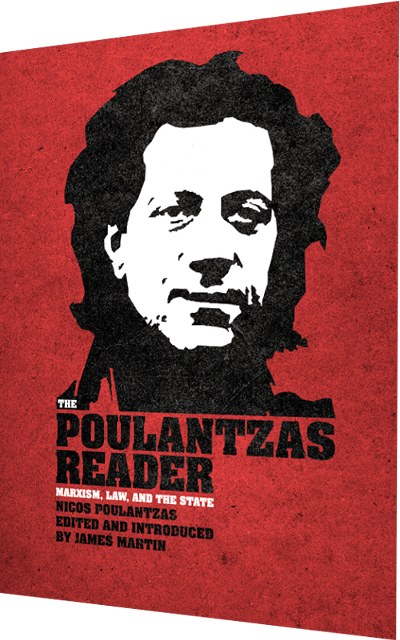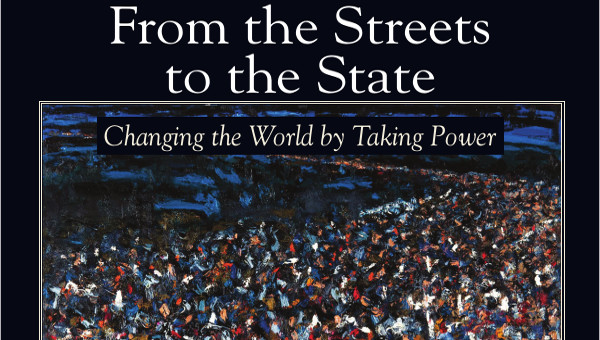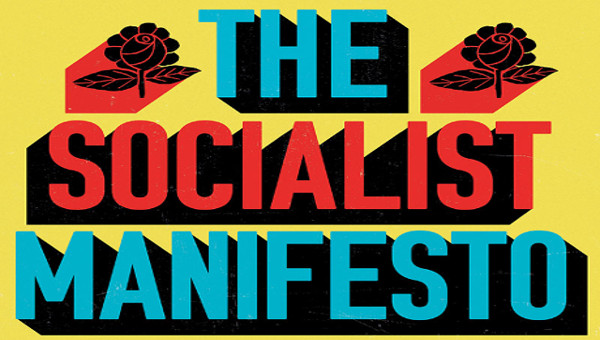«— The State and Socialist Strategy 9 —»
The Tightrope of Socialist Politics and Governance in Canada
Obstacles, Dilemmas, Strategy
One of the more persistent irritants amongst supporters of the New Democratic Party (NDP) has been its longstanding inability to replace the Liberal Party of Canada (LPC) as the country’s alternative to the different iterations of the Conservative Party of Canada (CPC). This irritation has been amplified by the LPC’s habit of campaigning with a left(ish) platform, often scooping up NDP policies, and then governing from the right. At no time was this more apparent than during the 2015 federal election when the LPC overtook the NDP, in part, by tacking to the left while the NDP erred by moving to the center in a bid to consolidate the lead it had heading into the election. A typical response by New Democrats, one that was on full display during the 2019 federal election campaign and since, is to argue that the NDP is the real article and that it will actually implement programs like universal pharmacare and childcare if ever it were to be elected.

What is implicit, yet increasingly explicit, in this criticism of the LPC is that the reason for this deceit is the LPC’s cozy relationship at an individual level with the wealthy and industry. To be sure, the LPC’s interpersonal relationships with the powerful interests groups and the wealthy, to say nothing of their overlapping worldviews, is important in explaining why their governments often abandon their electoral promises. Nevertheless, this line of criticism ignores important structural dynamics that explain in part why the LPC campaigns from the left and governs from the right. These are structural dynamics that the NDP – and any social democratic party – would confront in proposing redistributional reforms in a period of neoliberal capitalism.
Successfully passing and implementing policies such as universal pharmacare is not just a matter of putting in place different personnel in Parliament at the helm of the executive branch with different convictions. Let alone different membership cards. Notably, the NDP would face the same structural pressures the LPC does when it is at the helm, and likely at a greater level given the perceived threat the NDP represents to Canada’s elites as well as their lack of interpersonal connections with said elites. Moreover, that this amplified pressure would come not only from outside of the state – from the media, think tanks, and business associations; but also from inside the Canadian state and its multiple jurisdictional levels. This pressure is, of course, something that several NDP governments have faced and managed at the provincial level with different degrees of success and as often accommodation.
Political Transformation and the Capitalist State
In view of this, the NDP, and indeed the broader Canadian left would benefit from further reflection on how best to deal with these structural pressures and, specifically, what needs to take place in terms of organizing before any socialist government is elected in order to resist these structural pressures. Simply stating that things would be different under an NDP – or any left government in Canada for that matter – because of different personnel, no matter the level of their ideological commitment to socialism, is insufficient. However difficult it may currently be to elect governments that adhere to a socialist program, implementing such a program would likely be more difficult. Consequently, the Canadian left must be more realistic about the challenges it would face should it ever be elected. Being realistic, as we will see, would require a more radical strategy than the strictly parliamentary one currently on offer by the NDP.
The Marxist political theorist Nicos Poulantzas developed a more realistic and radical strategy for transforming the capitalist state and the challenges it would pose for the NDP in pursuit of social reforms and, as importantly, for strategies for socialists working both inside and outside the NDP in Canada.
The Strategic Relational Theory of the State
Poulantzas wanted to dispel what he believed to be two erroneous approaches to the state that either posited it as being a “thing” or a “subject.” Where the state is viewed as a “thing,” it is conceived of as being simply the “instrument” or “passive tool” of the dominant social classes. Where it is viewed as a “subject,” it is seen as endowed with its own “rationality” and power and as able to act autonomously and arbitrate among competing social classes (Poulantzas, 2008: 283). At the heart of these two erroneous conceptions of the state, fundamentally, was the positioning of social classes and class conflict outside of the state as an externality.
This ‘strategic relational theory of the state’, instead, conceives of the state as a social relation and, as such, one that places class struggle emanating from the relations of production on the terrain of the state. Moreover, these social relations are the main driver of changing state configurations. Importantly, the “institutional materiality” of the state, for Poulantzas, is not conceived of as a direct reflection of the capitalist mode of production or a simple instrument of capitalists. Instead, he famously explained that the state is better understood as a “material condensation of a relationship of forces” (Poulantzas, 2014, p. 136). In other words, the institutional materiality of the state apparatus, and different formal and informal networks therein, are shaped, in a refracted form, by class struggle. What makes the capitalist state an interested class state, nonetheless, is that its central strategic agencies, such as ministries of finance, will tend to promote the interests of dominant fractions of the capitalist class (Poulantzas, 2014, p. 136). In the words of the political theorist, Bob Jessop, the state exhibits a “strategic selectivity” that favours the interests of powerful social actors.
Understanding the state as a social relation has important ramifications for any movement and party that wants to carry out a socialist program, or parts of one, through the state. Notably, the state is not an entity that can entirely be possessed or wielded instrumentally to serve specific interests, not even entirely by the representatives of the ruling classes; nor is it a neutral entity capable of serving the interests of a political community as a whole on its own.

Beyond the strategic selectivity of the state, left governments when elected must also face the reality that “state institutional structure allows the bourgeoisie to meet a popular accession to power by permutating the sites of real and formal power” (Poulantzas, 2014: 138) to previously secondary state institutions. This can be achieved by using the judicial system or nominally symbolic institutions to impeach a government or block legislation (think of the obfuscatory role the Canadian Senate might play if a government with a substantive socialist program were ever elected federally) or by breaking the concentrated power at the summit of any state apparatus, say for welfare provisioning, to a lower level with more participatory and organizing practices with respect to the organization of the marginalized. This implies that winning an electoral contest is but a first step in a broader long-term struggle. Any government that seeks to implement a program that favours the interests of the working class and other subordinated groups must, therefore, do so through an institutional apparatus that is in part hostile to it.
For example, one need only look to how civil servants from BC Hydro and the energy ministry, in conjunction with business groups outside of the state, pressured the John Horgan NDP government in British Columbia to proceed with the Site C project despite important questions regarding its benefits and environmental impact. Moreover, more starkly and further afield one can look to the manner in which the judicial was weaponized in several Latin American countries to constrain the policies of governments associated with the so-called ‘Pink Tide’ and even remove them from power via ‘constitutional’ coups. Thus, any government that runs amok of powerful interests, no matter how benign the policy, can potentially face opposition not only from outside the state within civil society, but also within the state apparatus of the state as well.
This means that any political party that is serious about pursuing substantive socialist reforms must be prepared for the likely two-pronged onslaught from inside and outside of the state that will follow their election. Any such government that relies solely on a parliamentary wing and existing state institutions will predictably and quickly find itself hamstrung by the ‘realities’ of governing no matter how well-meaning, ethical, or ideologically committed its members may be. To frame this in the terms of the beloved T.C. Douglas Mouseland story, if ever a government of mice were to be elected, the governing mice would quickly be enticed to behave like cats as a result of the constant threat of being devoured by them. This is because the state can be thought of as a house of cats – where mice do live, yes – that has been built to meet the needs of cats above all else.
Walking the Tightrope of Socialist Governance
Despite the biased and contradictory nature of the state, Poulantzas nonetheless advocated pursuing socialism by moving through that very contradictory institutional field and seeking to modify it. This can be contrasted with the Leninist/Trotskyist ‘dual power’ approach that seeks to create parallel structures outside of the state in the hope of eventually supplanting it (for an interesting account of the difference between both strategies, one can read an interview with Poulantzas in a French Trotskyist newspaper). Now governing through the contradictory and often hostile field of the state is obviously a challenge which Poulantzas likened to walking a tightrope. On the one hand, implementing policies incautiously may lead to economic paralysis that could render a “boycott” (in other words a capital strike by capitalists decisive (Poulantzas, 2014: 198-99)). On the other hand not doing enough to implement a socialist program and/or doing so too slowly may lead to the demobilization and disappointment of such a government’s support base. Unsurprisingly, social relations continue to shape the strategic field of the state and its policies even when socialist governments are in power.
For example, fractions of the capitalist class can mobilize to make it difficult for such governments to borrow in money markets in order to fund their programs or meet their debt obligations. This capacity is amplified with the tendency of leftist governments getting elected in the midst of economic crises. One need only look to the recent experience of the former Syriza government in Greece as an example. In Canada, the experience of the Ontario NDP provincial government during the 1990s is a textbook example of the economic constraints that can be put up during an economic downturn to hamper a progressive government’s agenda, and how bowing to these constraints can demobilize its base. Parallel stories could be told of the Lorne Calvert and the Greg Selinger NDP governments in Saskatchewan and Manitoba respectively.
The high-wire act of trying to avoid doing too much, and not doing enough, is an unavoidable challenge for all governments that seek a program of substantive reform. Nevertheless, such governments, according to Poulantzas, could broaden the tightrope they will have to negotiate by engaging a transformative dual tension that acts upon the simultaneous inclusion and exclusion of dominated classes and other marginal social groups from the state in ‘united fronts’ of movements and parties in social struggles. Notably, such governments, as part of a broader social movement, can do so by pursuing a “political strategy of autonomy” whereby they organize on the “terrain of power” within the state and outside of it by seeking to “constantly maintain and deploy centres and networks at a distance from these apparatuses” (2014: 153).
Practically, this means pursuing elected office and, once elected, trying to establish institutional centers within the state “real centres of power on the strategic terrain of the state” that represent the interests of the working class and other subordinated groups (2014: 258). And on the other hand mobilizing forces outside of the state in an extra-parliamentary manner. On the whole this requires the simultaneous “extension and deepening … of the institutions of representative democracy” and mobilization through participatory mechanisms so as to create popular “centers of power” embodying the interests of dominated classes outside and within the state. Such a strategy would enable socialist governments, as part of a “mass movement founded on broad popular alliances” to better resist the dual onslaught of powerful interests within and outside the state (2014: 258–62). Moreover, the productive tensions between socialist forces within and outside of the state, and between representative and participatory mechanisms of democracy could serve to mitigate the pressure on the administrative and parliamentary wings of socialist parties to capitulate, i.e. ‘not do enough’, and fall into the trap of Robert Michel’s “iron law of oligarchy” of bureaucratization of the party accompanied by gradualism in political strategy.
Nevertheless, employing such a strategy and taking on powerful interests head on does not, of course, inherently prevent capitulation or ensure the successful implementation of a socialist program. Notably, Poulantzas readily admitted that engendering such a process of change could lead to new crises and opportunities that may enable dominant classes to re-assert themselves by different means (2014: 256-64). One particular danger that he was keenly aware of was the possibility that excessive top-down “statism” by a governing party in the state could be combined with shallow self-management mechanisms in a way that distorts the legitimacy of the latter and of the socialist project as a whole (2014: 196). One need only look to the experience of the Venezuela’s communal councils for an example of this type of danger. Furthermore, this strategy does not ensure that effective policies will be implemented, nor that that they will be implemented with technical proficiency. Finally, given the global nature of capitalism, dominant classes would retain the ability to mobilize economic and institutional resources located beyond the national scale to thwart such a strategy. Again, all that Poulantzas’ strategy of dual democratization promises is greater room to manoeuvre for socialist governments in order to implement economic and political reforms that can contribute to altering the overall balance of forces in the medium to long-term.
Poulantzas’ insights bring forth questions for both the so-called ‘activist’ wing of the NDP as well English Canada’s broader left, and the party’s establishment or ‘insiders’ with regard to the future of democratic socialism in Canada.
Questions and Challenges for NDP Activists
From the point of view of the ‘activist’ wing, the party’s failings can be summed up by its resistance to internal democratization. Notably, that the NDP establishment all too often relegates the party membership to the role of a passive cheerleader called upon for financial support and voluntary election work without being meaningfully consulted over the direction of the party. In addition to this, in a reflection on his membership in the party, the historian Ian McKay (2018: viii-ix) explains that the party all too often waters down it policies and rhetoric in a futile bid to gain middle class respectability and parliamentary prestige. More damningly, that in the absence of accountability to party members, NDP governments have enacted neoliberal austerity policies, such as the Nova Scotia NDP government of Darrell Dexter, despite the mandate to do otherwise. Or, that they have gone too far in compromising with powerful economic interests in a bid for stability in a way that betrays the party’s purported policy goals such as the relationship between the party’s position on climate change and energy policy during the Alberta NDP government of Rachel Notley. Finally, that when the NDP’s moves to the center, it impedes potential electoral success. Thomas Mulcair’s tenure as leader of the federal party represented the latest instance of policy moderation and electoral failure at the national level.
In view of this ongoing dissatisfaction with the party’s establishment, Roberta Lexier explains that there have been several major attempts – notably, the Waffle Movement during the 1970s, the New Politics Initiative (NPI) at the turn of the century, the Leap Manifesto in the mid-2010s, and more recently the Courage initiative – to transform the party in a way to make it more responsive to its membership (2018: 111-212). The NPI, in particular, was the initiative that came the closest to succeeding and was perhaps the closest to pursuing the strategy outlined in the previous section with its effort to combine social movements, the party, and unions into a new front that combine both parliamentary and extra-parliamentary dimensions. Nevertheless, these efforts were successfully thwarted by the very party establishment they sought to confront with the support of important swaths of the party membership at party conventions.
These historical experiences prompt important questions for the activist and socialist wings of the party, as well as the broader English Canadian left, whether sympathetic or hostile to the NDP. Notably, given the current electoral weakness of the NDP and the relative weakness of the broader left, is it worth devoting precious resources and time to reform the NDP from within it to make it more democratic and left-wing? For example, by building a reform movement within the party à la Momentum in the Labour Party. Or, then again by building a formal political organization outside of the NDP that is not a party, yet operates both within and outside of the party in a bid to move it to the left such as with the Democratic Socialists of America and its strategic support for candidates that operate within the US Democratic Party like Bernie Sanders and the Congressional Progressive Caucus. Importantly, this is the strategy that is being employed and advocated by Courage.

Alternately, might it be more effective to build an alternative party to the NDP? For example, by bringing together a collection of political and social movements into an electoral vehicle such as Québec Solidaire, Podemos in Spain, or Syriza in Greece? A new party, of course, would not be obligated to imitate those examples and could set its own course in bringing together radical left forces outside traditional social democracy capable of advancing an anti-capitalist perspective. To be sure, working within the NDP or building an alternative to it both have their advantages and disadvantages. Answering which approach might be more effective would necessarily involve identifying the factors that have made the NDP, the central institution of the progressive left in English Canada, so resistant to previous attempts at internal democratic reform. Moreover, it would involve identifying the degree to which these factors are irremediable or still in place. This is a central question of strategy for the terrain of political organization but also of building united fronts of social struggle.
The NDP Establishment
NDP ‘insiders’ and the wider establishment wing of the party, conversely, point to provincial victories as well as the period of internal reform and success that was achieved during Jack Layton tenure as the leader of the federal party between 2003 and 2011. David Laycock and Lynda Erickson (2014) explain that the ‘modernization’ of the federal party included the professionalization and the disentangling of fundraising efforts from the provincial wings; the centralization and professionalization of election campaigns through a greater reliance on polling and a focus on the leader; and greater centralization of the party structure through more careful management of party conventions by the party’s administrative wing with the help of mechanisms such as the Election Preparedness Committee (EPC). Much of these organizational and strategic innovations were drawn from the US Democratic Party. It goes without saying that the reforms that took place during this period are anathema to the type of strategy advocated by Poulantzas and has been derided by the ‘activist’ wing of the party though it is largely credited by its advocates for contributing the 2011 federal election breakthrough.
The untimely death of Jack Layton in 2011 and the subsequent electoral failure in 2015 under the leadership of Mulcair put into question the forward momentum of the modernization movement within the party. Mulcair was defeated as leader during a leadership review vote during a convention the following year. The 2019 federal campaign witnessed a return to a more left-wing platform under the leadership of Jagmeet Singh including a more unapologetic stance on increasing taxes on the wealthy. This turn was no doubt helped, in part, by the growing prominence of American democratic socialist figures such as Bernie Sanders and Alexandria Ocasio Cortez and developments in the British Labour Party under Jeremy Corbyn. Nonetheless, party ‘insiders’ largely remain in key positions of influence within the party and there has not been an effort to reform the party structures internally to make it more democratic, and the electoral campaign itself, in form and substance, broke little new ground and failed to re-assert the ‘s word’ – socialism – into political discourse.
This, of course, is still far from answering the question of what the NDP might do to resist the blowback within and outside the state if it were ever to find itself forming government or even participate directly in a minority government? What resources could it call on to withstand a capital strike, for example? To be fair, Singh is quite aware that instituting policies such as universal pharmacare would lead to significant resistance from powerful actors such as the pharmaceutical industry and even says so openly. However, he has not articulated what strategy would be deployed to resist such structural forces.
Mobilizing left rhetoric effectively may lead greater electoral returns, but it by no means provides answers on how to successfully govern from the left in a hostile environment. A more realistic approach to governing as socialists requires more concrete answers to these types of questions. But there are more fundamental questions, too, of political organization and strategy that the left in Canada cannot avoid to capture some of the spirit of political experimentation and excitement animating socialist politics elsewhere. •
Works Cited
- Laycock, David and Lynda Erickson. (2014). “Modernizing the Party.” In Reviving Social Democracy: The Near Death and Surprising Rise of the Federal NDP, edited by David Laycock and Lynda Erickson. Vancouver: UBC Press, pp. 84-105.
- Lexier, Roberta (2018). “Challenge from Within: The NDP and Social Movements.” In Party of Conscience: The CCF, the NDP, and Social Democracy in Canada, edited by Roberta Lexier, Stephanie Bangarth, and Jonathan Weier. Toronto: Between the Lines, pp. 110-21.
- McKay, Ian (2018). “Foreword.” In Party of Conscience: The CCF, the NDP, and Social Democracy in Canada, edited by Roberta Lexier, Stephanie Bangarth, and Jonathan Weier. Toronto: Between the Lines, 2018, pp. vii-x.
- Poulantzas, Nicos (2008). “The Capitalist State: A Reply to Miliband and Laclau.” In The Poulantzas Reader: Marxism, Law, and the State, edited by James Martin. 270–93. London: Verso, 2008, pp. 270–93.
- Poulantzas, Nicos (2014). State Power, Socialism. London: Verso.





